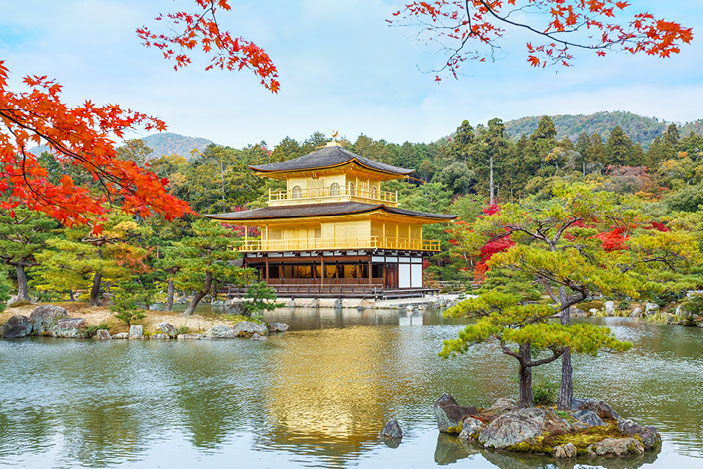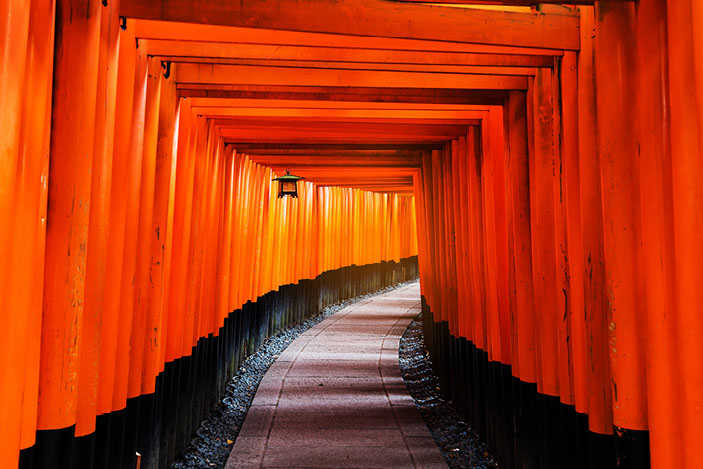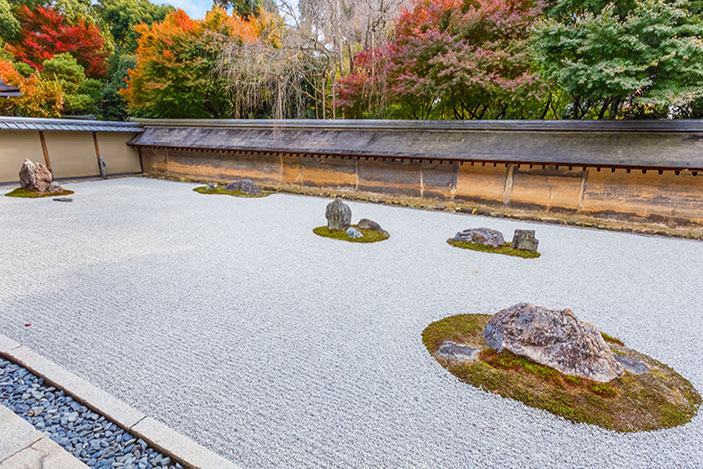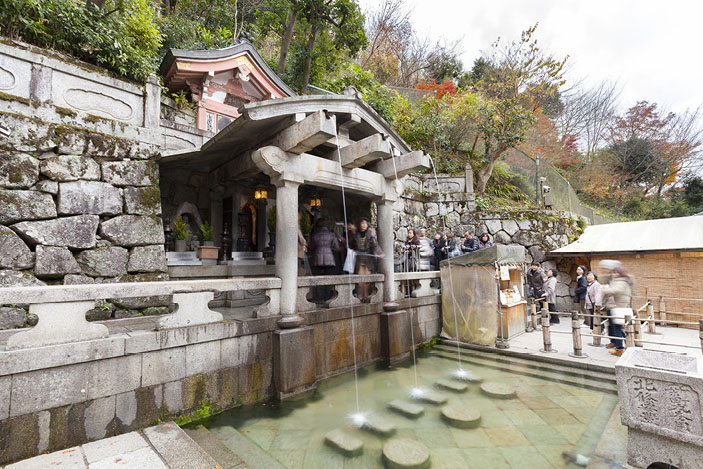THE HISTORICAL decline of Kyoto’s prominence as a city has proven to be a double-edged sword.
While its economy has been on the wane, along with its population, this has allowed the early capital of Japan to step off the treadmill and enjoy a graceful ageing that has seen its natural beauty and heritage sites enjoying prominence.
Despite enduring a long history of devastation — be it natural calamities or at the hands of samurai factions — much of its history is intact. Spared during the World War II firebombing, Kyoto has an abundance of prewar buildings. What the war didn’t destroy, modernisation could have.
But having lost its position as Japan’s largest city — it is well down the order, though still in the top 10 — may have helped preserve many of its traditional charms.
There are nearly 2,000 religious sites in Kyoto, and more than a dozen are listed by UNESCO on its World Heritage Sites. Many of these shrines are within short travel distance of Kyoto city centre.
While generally placid and ideal for moments of reflection, they are still tourist sites. And once the busloads from China and Korea are done with eating and shopping, they flock noisily to many of the popular shrines and temples.
During the festive periods, the locals congregate at temples where they donate to have their desires realised by benevolent deities. Be they writings on wood blocks, or written on pieces of paper and strung up, or by ringing a bell, clapping and bowing, or drinking water, the takings from the desirous devotees help maintain the temples.
Regardless, many are worth spending time at for their distinct architecture.
All That Glitters…

Rokuon-ji a Rinzai Zen Buddhist temple in Kita-ku is magnificent as its gilt glints in the sunlight. Also known as Kinkaku-ji (the temple of the golden pavilion), it is part of a garden complex that dates back to the late 12th century. One of the 17 World Cultural Heritage sites in Kyoto, it is also a tourist draw, probably since all that glitters here is gold.
Rebuilt following a fire in 1950, each floor adopts different architectural styles, and it is topped off by a bronze phoenix. The surrounding gardens are ideal for strolling, when not being overtaken by visitors in a hurry for the facilities or the tea shop.
Vermilion Wandering
The spectacular sight of some 10,000 vermilion torii (shrine gates) leading you up a winding pathway is reason enough to take the short train ride from Kyoto to Fushimi Inari.

One of Kyoto’s oldest Shinto shrines, it is the go-to place for businessmen seeking blessings for their enterprises. Dedicated to Inari, the Shinto god of rice, the place is filled with devotees and tourists alike during the New Year prayers. It is quieter otherwise, allowing you to make the spectacular trek through the orange torii arches donated by grateful businesses and entrepreneurs.
The two-hour trek takes you past quiet woods where foxes — said to be messengers of Inari — are said to roam. If you don’t see any en route, then there are statues of them, each protectively gripping a key to a rice granary in its mouth.
You might also want to read:
Kyoto’s Traditions Being Tested
Leave No Stone Unturned
Ryoan-Ji is a Zen temple in northwest Kyoto that is celebrated for its garden. A football field-sized rock garden, it has 15 moss-covered boulders that are aligned such that from any angle on the ground, you can only see 14 of them. The belief is that only by attaining enlightenment can you view all 15 boulders. You can sit along the stairs on one side of the garden and try for enlightenment, but you would really have to dig deep for tranquility amidst the scampering children and wailing babies.

Enlightenment In The Dark
As a test to see how comfortable you are in the dark — literally or metaphorically as a religious leap of faith into the unknown — take a walk into Zuigudo. Named after the worship of Daizuigu Bosatsu, the mother of Buddha, this walk is akin to being in the womb of Buddha. Located just past the stone lions guarding the entrance to Kiyomizu-dera, this short walk is done in total darkness until you come upon a lit stone with the word “womb” written in Sanskrit. Make a wish — that’s why you pay a fee at the entrance — and emerge into the bright light.

Further enlightenment may be forthcoming as you walk through Kiyomizu-dera (Pure Water Temple), established in 798 by the monk Enchin. Despite being razed it was resurrected, and the main stage constructed without a nail and able to withstand earthquakes.
The Otowa-no-taki waterfall offers three channels of water, and for the right fee you can opt to drink from the cup of wisdom, longevity or matchmaking (but not all three). There are several smaller shrines, but the meander through them leads eventually to a stunning view of Kyoto.
Take the alternative path down, past an orderly cemetery that at the right time of evening stirs the imagination.
This article was first published in STORM in 2011.
Main Image: Kiyomizu-dera / Sean Pavone / Shutterstock.com



















